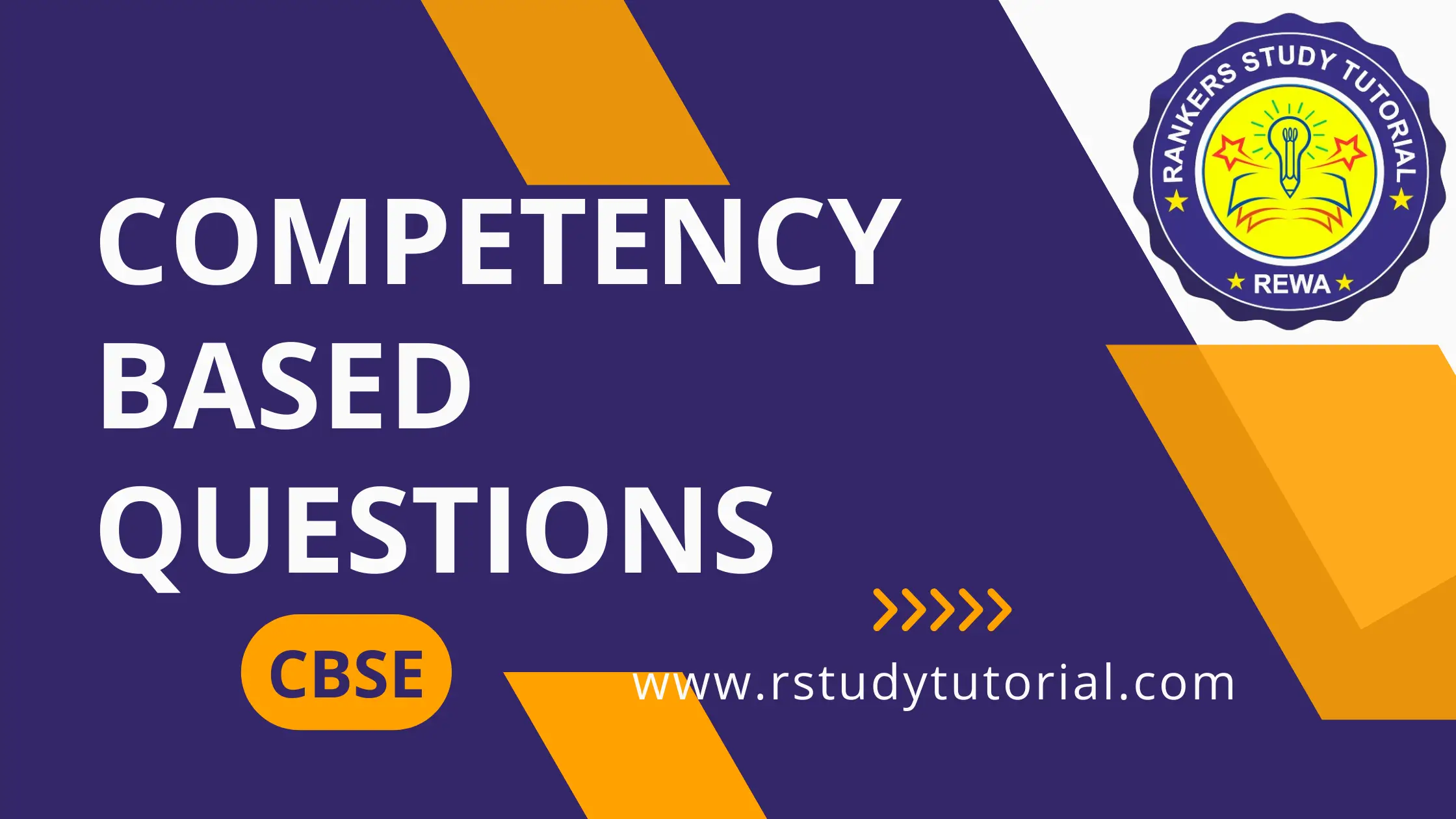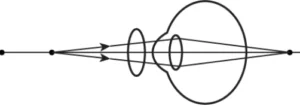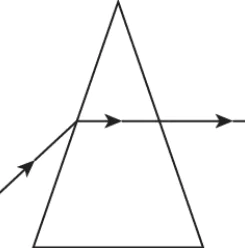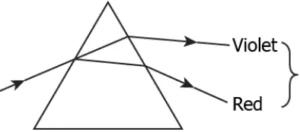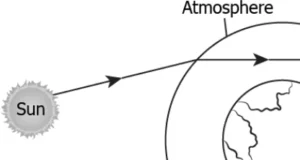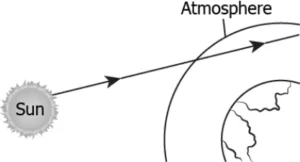Hint: Illustrate the parts and function of human eye, in order to understand how humans see the objects around them.
Question.1. In which part of the human eye the image of an object is formed?
(a) iris
(b) pupil
(c) retina
(d) cornea
Question.2. A person gets out in the sunlight from a dark room. How does his pupil regulate and controls the light entering in the eye?
(a) the size of pupil will decrease, and less light will enter the eye
(b) the size of pupil will decrease, and more light will enter the eye
(c) the size of pupil will remain same, but more light will enter the eye
(d) the size of pupil will remain same, but less light will enter the eye
Ans.1. (c) retina
Ans.2. (a) the size of pupil will decrease, and less light will enter the eye
Hint: Describe how focal length of eye changes, in order to understand how humans see close and far objects.
Question.3. A person is seeing an object closer to his eyes. What changes in his eyes will take place?
(a) the pupil size will expand
(b) the ciliary muscles will contract
(c) the focal length of eye lens will increase
(d) the light entering in the eye will be more
Question.4. A person standing at point Y is watching a car coming from a point X to O as shown.

(a) 1 and 3
(b) 1 and 4
(c) 2 and 3
(d) 2 and 4
Ans.3. (b) the ciliary muscles will contract
Ans.4. (b) 1 and 4
Hint: Identify the defects of vision in human eye (myopia, hypermetropia, presbyopia) and their causes, in order to devise a correction method for them.
Question.5. A person went for a medical check-up and found that the curvature of his eye lens is increasing. Which defects he is likely to suffer from?
(a) myopia
(b) cataract
(c) presbyopia
(d) hypermetropia
Question.6. The image shows the ray diagram of a defected eye.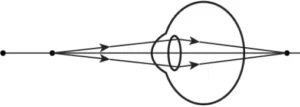
(a) 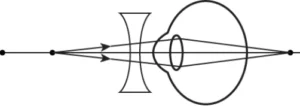
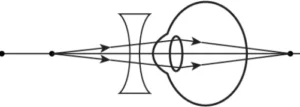
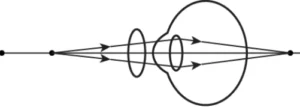
Ans.5. (a) myopia
Ans.6. (d)
Hint: Examine the path of light rays through a prism, in order to determine how light gets deviated when travelling through a prism.
Question.7. Which image shows the deviation of light in a prism?
(a) 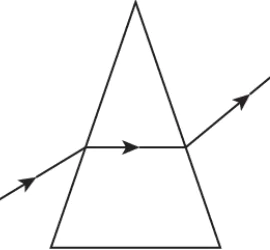
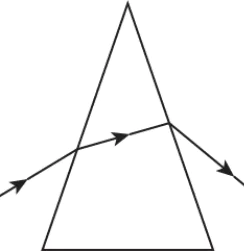
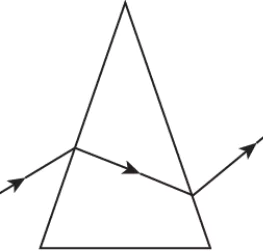
Question.8. The image shows a light ray incident on a glass prism. The various angles are labeled in the image. Which angle shows the angle of incidence and angle of refraction, respectively?
(a) A and D
(b) B and E
(c) C and F
(d) D and F
Ans.7. (b)
Ans.8. (a) A and D
Hint: Trace the path of white light rays through a prism, in order to determine that white light is made of seven colours.
Question.9. The image shows the dispersion of the white light in the prism.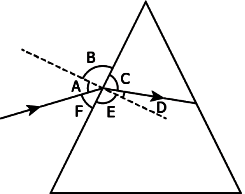
(a) X: red; Y: green; Z: violet
(b) X: violet; Y: green; Z: red
(c) X: green; Y: violet; Z: red
(d) X: red; Y: violet; Z: green
Question.10. A ray of light is incident on one face of the prism, as shown.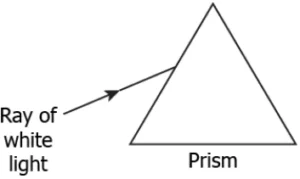
(a) 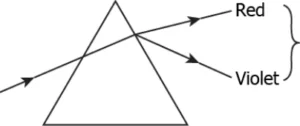

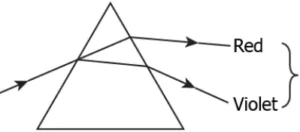
Ans.9. (b) X: violet; Y: green; Z: red
Ans.10. (c)
Hint: Elaborate the process of atmospheric refraction, in order to understand natural phenomena, like twinkling of stars and advance sunrise and delayed sunset.
Question.11. Why stars appear to twinkle at night?
(a) because the light of stars travels in different medium
(b) because the distance of star varies when earth rotates
(c) because the star changes its position relative to earth
(d) because the atmosphere reflects the light at different angles
Question.12. The sun appears two minutes before the actual sunrise due to atmospheric refraction.How does sunlight travel from space to atmosphere?
(a)
(b) 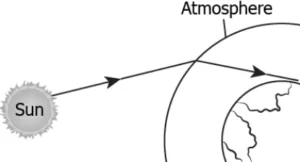
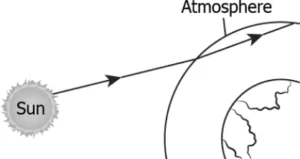
Ans.11. (a) because the light of stars travels in different medium
Ans.12. (b)
Hint: Explain the process of scattering of light, in order to understand natural phenomena, like tyndall effect, blue colour of the sky & red colour of sun at sunrise & sunset.
Question.13. Which option justifies that the Sun appears red at sunrise and sunset?
(a) red scatters highest by the atmosphere
(b) the distance between the sun and earth reduces
(c) red has high wavelength, so it travels longer distance
(d) the white light disperses into seven colours, only red enters the atmosphere
Question.14. A student learns that the scattering of sunlight depends on the wavelength of the light and size of particles present in the atmosphere. The student collects the data about the wavelength of the visible lights and size of the particle as shown. 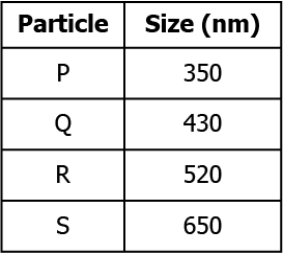
(a) P and R
(b) R and S
(c) P and Q
(d) Q and S
Ans.13. (c) red has high wavelength, so it travels longer distance
Ans.14. (c) P and Q

